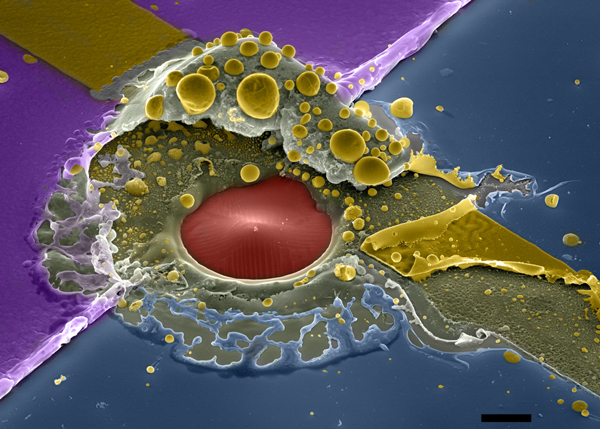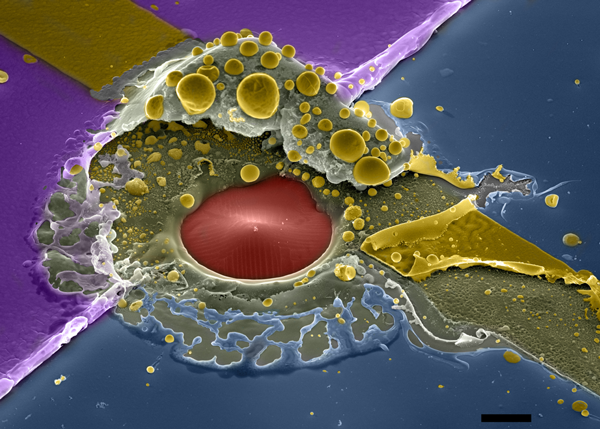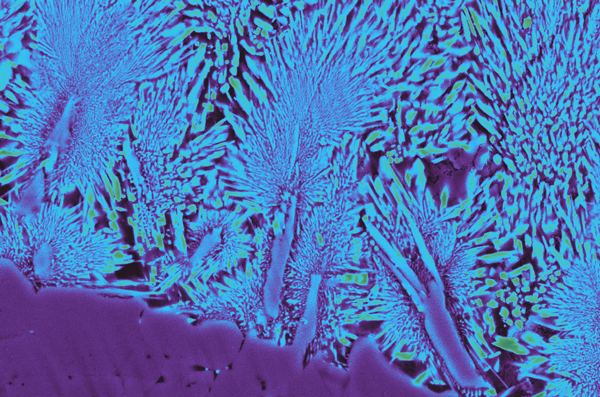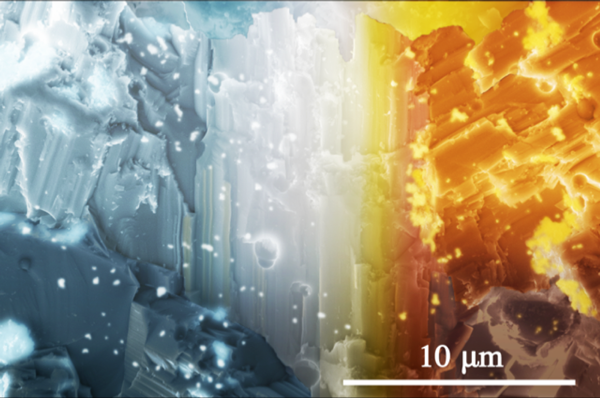Science as Art Winners Now on Display

Sept. 15, 2021 - Researchers in the UC Irvine Department of Materials Science and Engineering investigate how materials perform and why they may fail, and they explore how to invent new materials with functional properties that enable faster computers, cleaner energy, more efficient automobiles and airplanes, stronger and longer-lasting hip implants and more. Their research involves looking at the structure of matter, from the atomic to millimeter scale, with advanced technology and characterization instrumentation. For the second year in a row, the department along with its Graduate Student Association has encouraged researchers to share these images in their Science as Art competition.
Launched last year, the competition aims to encourage students and researchers to highlight the beauty in their MSE research and share it with the UCI community. Entries feature optical, scanning electron and transmission electron microscopy or other microscopy or spectroscopy techniques with minimal modifications. This year’s first, second and third place winners were selected from 13 entries submitted by undergraduate and graduate students, and postdoctoral scholars. All members of the department were invited to vote for the images they felt best translated as art.
The top three artworks are now displayed on the fifth floor in Engineering Tower, in the hallway and the MSE department business office. Here are the winning entries, with explanations provided by the artists, who are all graduate students.

First Place
“Micro Splat”
Alex Abelson
Cratered remains of a defective planar gold electrode (gold) deposited atop two thin films (purple and blue). At the interface of the two thin films, partial discontinuity in the gold electrode led to thermal runaway and obliteration of the electrode and nearby material. Gold globules were scattered around the blast site. The pit of the crater (red) is the Si substrate upon which the thin films and gold electrodes were deposited. Striations in the exposed Si substrate likely result from fracture along particular Si crystal facets. The scale bar is 2 micrometers. The image was acquired using an FEI Magellan (scanning electron microscope).

Second Place
“A Muster of Peacocks”
Katherine Acord
The dendrites that form at the base of an additively manufactured ceramic sample resemble a group of peacocks, which is known as a muster.

Third Place
“Song of Ice and Fire”
Yingjie Yang
The SEM image shows the surface of conventionally sintered monazite (LaPO4). The strong tendency to form low-energy surfaces in this anisotropic ceramic material causes the angular features — the facets, the orientation of which changes in different grains.
– Lori Brandt
